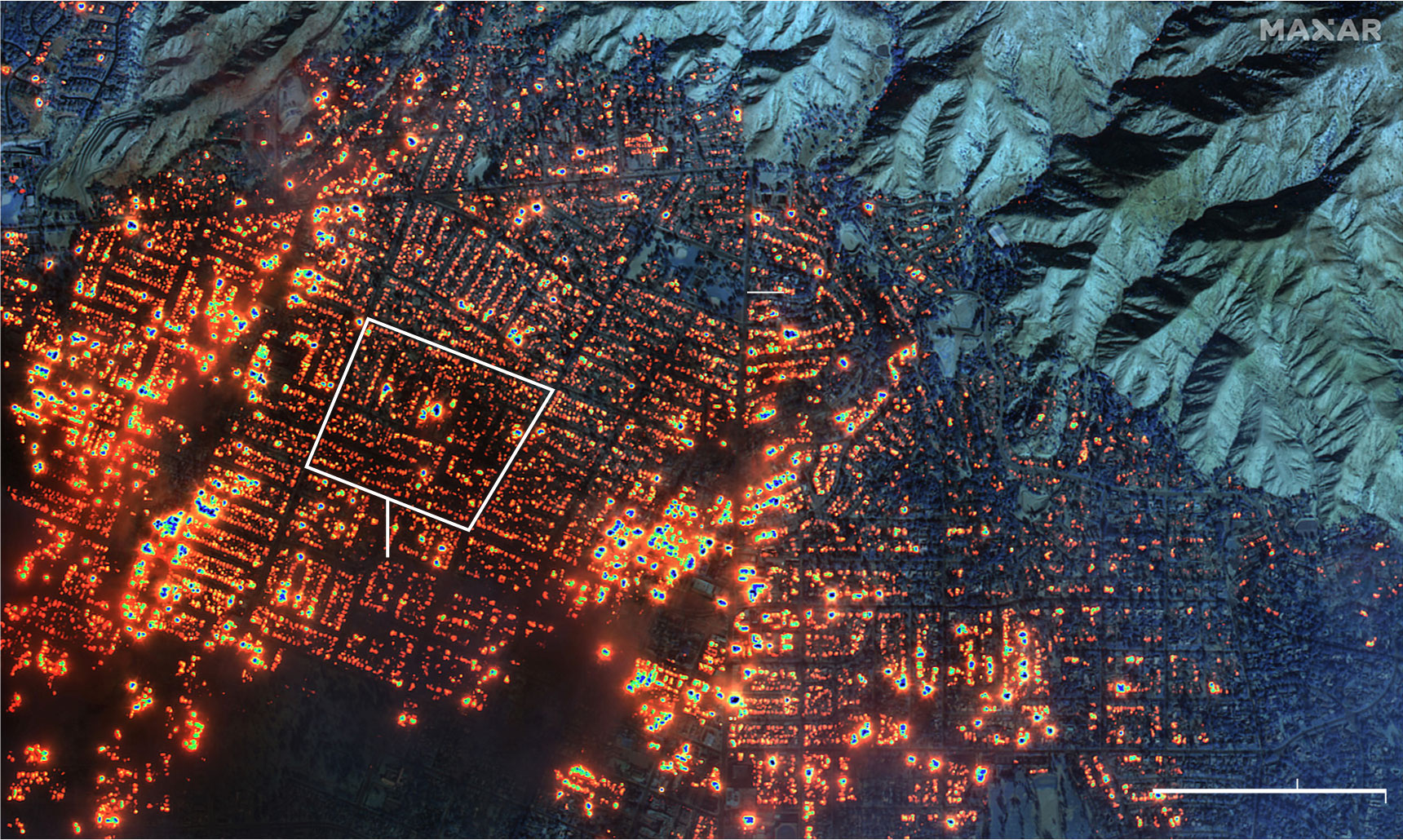California’s worst winter fires in over 40 years have already claimed 25 lives in the Greater Los Angeles area. However, officials have stated that the actual death toll remains unknown as the fires that broke out on 7 January continue to ravage the region. Around 180,000 people have already been evacuated and other cities remain under evacuation orders with thousands preparing to leave at a moment’s notice.
The wind-driven fires have scorched more than 40,000 acres in the Greater Los Angeles area, decimating communities and destroying over 12,000 buildings. Aerial footage reveals that over 7,000 structures have been damaged or destroyed as the fires rage on, bringing down trees, severing power lines and causing gas leaks and electricity outages.
Infrared satellite image of Altadena, north of Pasadena, burned by the Eaton fire

Source: The Guardian
During the winter season, California has previously very rarely seen fires. In fact, an analysis of wildfires since 1984 found that only four fires covering at least 15 square miles occurred during the winter months. Most extensive wildfires, about two-thirds, tend to ignite in summer, particularly in June, July, and August.
So, what’s different this year?
Climate experts suggest that the current destructive wildfires are being fuelled by climate change with delayed rainfall having made the land unusually dry thus increasing the risk of fires.
Southern California, which normally sees rainfall during the autumn and early winter months, has experienced barely any precipitation since July 2024 making this one of the driest periods the region has faced in 150 years.
Cumulative rainfall in winter as percentage of average annual total
Source: The Guardian
While the winds themselves, commonly known as Santa Ana winds, are a natural phenomenon, experts explain that climate change has intensified the overall conditions that are making these fires worse. Scientists emphasize that climate change is increasing the likelihood of these dry and windy conditions which creates conditions that are ideal for fires to spread.
In another study, scientists explain that climate change has led to rapid shifts between wet and dry conditions, often referred to as “whiplash weather” which has made vegetation in California even more susceptible to burning. Years of drought were followed by two years of heavy rainfall in 2022 and 2023 which caused rapid vegetation growth but by late 2024, the sudden return to dry conditions left this vegetation completely dry and ready to ignite. Scientists estimate that these rapid swings in weather patterns have increased by as much as 66% globally since the mid-20th century, with California being one of the most affected areas.
Each degree of global warming increases the atmosphere’s ability to evaporate, absorb, and release water by 7%, which not only intensifies floods during wet periods but also dries out plants and soil during droughts. This “atmospheric sponge”, as scientists call it, is a key driver behind the increasing intensity of wildfires.
However, Professor Stefan Doerr, Director of the Centre for Wildfire Research at Swansea University, shares a different point of view.
“While fires are common and natural in this region, California has seen some of the most significant increases in the length and extremity of the fire weather season globally in recent decades, driven largely by climate change. That said, it is too early to say to what degree climate change has made these specific fires more extreme. This will need to be evaluated in a more detailed attribution analysis.”
In the meantime, as weather forecasters predict strong winds throughout the current week, California’s authorities are reluctant to make any predictions as to when these unprecedented wildfires will be fully contained.
“We are not in the clear as of yet, and we must not let our guard down,” Los Angeles Fire Chief Kristin Crowley told journalists on 13 January.

